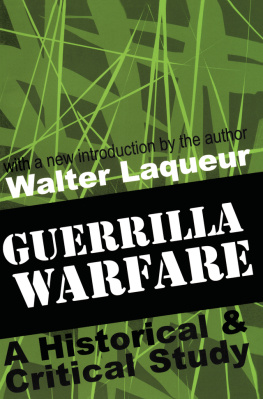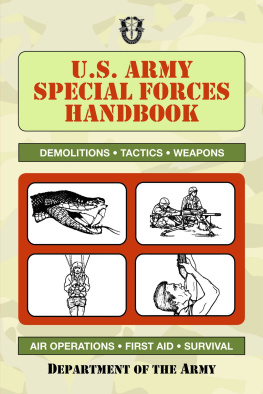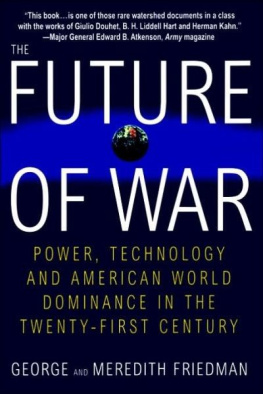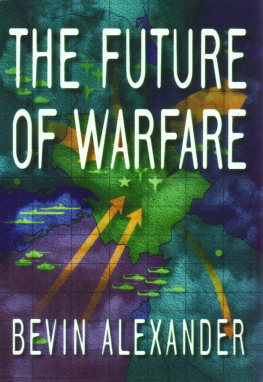The sooner this excellent book is read by Western policy-makers, the better
Daily Telegraph
[Colin Grays] excellent book should be required reading for anyone interested in promoting our safety and prosperity in the years ahead. It offers many wise words and thoughtful speculations about what the threats to the next few generations might be
Max Hastings, Sunday Telegraph
This is an academics book on a very big subject, and a very fine one
Robert Fox, Evening Standard
Lieutenants and Lieutenant-Generals alike should ask for this book in their letter to Father Christmas
British Army Review
A book of this sort accessible, mostly devoid of jargon, reasonably priced, and well written is especially welcome
Military Illustrated
To my daughter, Tonia. May she live in a peaceful
world, contrary to her fathers expectations!

Contents
TABLES
FIGURES
Historical perspective is the only protection we have against undue capture by the concerns and fashionable ideas of today. These concerns and ideas may be valid and important for now, but they are inadequate as a basis for understanding future warfare. In this book I strive to take a long-term view of the subject, and to distinguish between its changing and unchanging features. The Cold War is barely fifteen years gone, yet already it is orthodox among both liberals and many conservatives to claim that major war between states is obsolescent or obsolete. If history is any guide, this popular view is almost certainly fallacious.
Another Bloody Century does not argue that nothing changes, only that little if anything of profound importance does. This is not exactly a majority position to hold, even among those who identify themselves as defence professionals. To illustrate my claim, I will quote from the Summary of the Discussion of a conference at which I spoke in May 2004, in Washington, DC. The summarizer reported, faithfully, that
Only one panellist, Colin Gray from the U.K., was willing to speculate about a re-emergence of great power rivalry by 2020. Thinking specifically about Russia and China, he challenged the prevalent notion of most panellists that decisive war between major states is rapidly moving towards historys dustbin.
No one can know which competing view of the future of major interstate war is the more correct. But what I do know for certain, is that today there is a near consensus among those widely held to be expert in strategic matters that war of that kind is now all but infinitely remote. I cannot disprove that speculative belief, but I hope that I provide some persuasive logical and historical grounds for promoting mental unease among its adherents.
It has been a novel challenge to write a book on future warfare. I am grateful to Penny Gardiner of Weidenfeld & Nicolson for issuing that challenge, but I will confess that on many occasions I questioned the wisdom of my acceptance. Insofar as there is a debate about future warfare, we find antagonism between culturalists and materialists, which is to say between those who emphasize ideas and those who lay stress upon machines. In one vital respect, however, most theorists and other commentators share a common world view. They see the future as the logical, linear continuation of todays trends. That is an error which derives both from a lack of historical perspective, and from an assumption that humankind can improve its performance in the provision of peace with security.
This book conveys an unpopular and unglamorous message. I argue that the future of warfare will be very much like its past. Future warfare will be strategic history much as usual. Of course, some periods have been bloodier than others, with the short twentieth century of 191491 being the bloodiest of all, both in actuality and even more in its nuclear possibilities. It is exceedingly difficult to write a book about a subject utterly bereft of facts. The future has not happened. No measure of skill in scenario invention, or indeed in any other methodology, can alter the reality of our ignorance. The challenge is to write a book that says worthwhile things about the future, all the while accepting the inescapable limits of our knowledge.
My approach has been to argue that although most of wars contexts are constantly changing, albeit not at constant rates, much of what is most important about war and warfare does not change at all. It so happens that although we know nothing in detail about warfare in the 2020s or 2050s, we do know an enormous amount about war and warfare per se. After all, we have access to nearly three millennia of strategic history! And it is improbable that there will be a traumatic breakpoint in historys continuities, including the continuity of its discontinuities, in the near future.
Readers will find this work holistic, strongly opinionated, but not pessimistic. I do not believe in progress in security affairs, as my principal title, Another Bloody Century, declares up front. I am impressed, however, by our ability to muddle through. The book has no axe to grind, beyond a commitment to advance forceful argument in praise of history as the best available, actually the only, source of education on the future. I argue some unfashionable theses on terrorism and insurgency, as well as on major interstate warfare and the limited strategic value of high technology. Similarly, to return to the claim for holism, I am at some pains to insist that there is more to war than warfare, that war is about the peace that follows, and that the succeeding peace is the breeding ground for future conflict.
I am grateful to the School of Sociology, Politics and International Relations at the University of Reading for granting me the study leave necessary to complete most of the writing of this study. In particular I would like to thank the Schools Head, Dr Robert McKeever, for providing vital financial support. Two friends served nobly as honest critics. James Kiras and David Lonsdale were able both to save me from myself and achieve some vengeance for past doctoral pains. I am much in their debt. Also, I am grateful to my long-time friend, now my colleague again, Ron Barston, who made an important contribution to my argument at a vital moment. Needless to say, he is not responsible for the use that I made of his wisdom.
I must thank my very good friend and colleague, Dr Keith B. Payne of the National Institute for Public Policy in Fairfax, Virginia, for his permission to borrow the superb shortlist of fallacious scientific predictions from his 1986 book on Strategic Defense. Also, I wish to record my gratitude to Dr Everett C. Dolman of the Air University at Maxwell Air Force Base, Alabama, for the generosity with which he has allowed me to deploy his diagrams explaining, at least illustrating, some of the mysteries of orbitology.
The arguments in the book were field-tested in a seminar held at Oxford by Professors Hew Strachan and Adam Roberts, in a conference in Washington organized by the Center for Naval Analyses for the National Intelligence Council, and in a presentation to the Principles of War Seminar, also in Washington. I benefited from those outings; I only hope that the others attending felt the same way about my presentations.
After thirty-five years of self-indulgent, extensive and discursive footnoting, Another Bloody Century is a bold experiment in parsimony. The text is supported strictly by references, with no footnotes. This is a dramatic departure for the author, who had long been in the bad habit of all but conducting a dialogue, even a debate, between text and footnote. As it is, the text carries the full burden of explanation.








